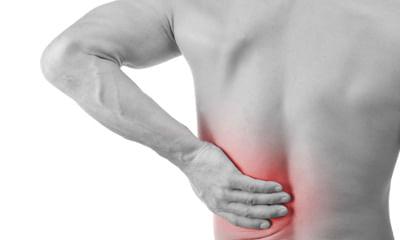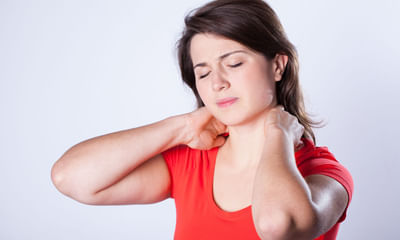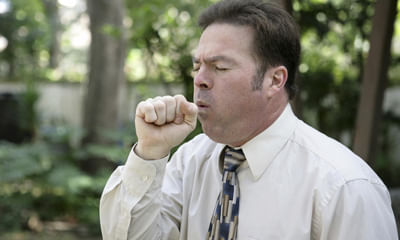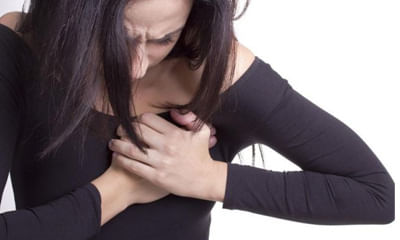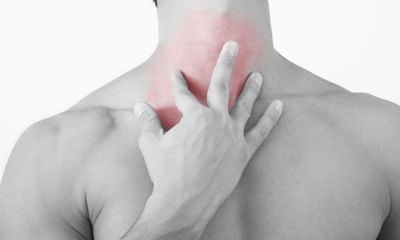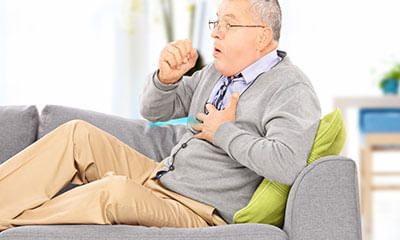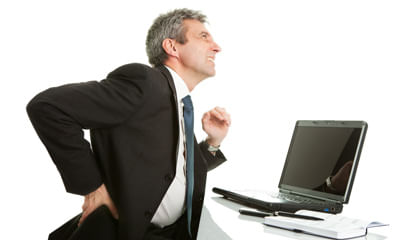Yoga For Cold N Cough
I am 20, the problem started 6 months ago when I visited to the doctor for my back pain and cough he gave me medicine an ...
Ask Free Question
U need to first find out cause of high bp at your age. Or it can be idiopathic. Are you stressed. Before this incident, what were your symptoms. Family history of bp/heart problem. Exercise like meditation for now. Exercise is one of the most important things you can do to combat stress. Take a few minutes to breathe in and out in slow, deep breaths. Reduce your caffeine intake. Write it down. This can be stress buster for u. Write every day even if 2 lines.Chew gum. Spend time with friends and family. Laugh.Massage. Eat a healthy diet. Pursue one hobbywalk in naturemeditation. Yoga for details you can consult me.
I'm 23 years old, a student in greece from nigeria, I arrived in greece last year autumn on 2nd of november, around endi ...
Ask Free Question
Oral antihistamine are for allergy. Not pain. What r other symptoms that you r experiencing? By doing what like walking, exertion, eating or empty stomach- it increases or decreases in intensity. For how much time it remains? Is there stiffness also? How is your appetite?R you constipated or having loose stools? Any problem in urine?Get your thyroid profile, cbc, blood sugar fasting checked from some lab. I need details of the case. In the meanwhile follow this 1. Take your breakfast every day. Don't skip it. U should eat whatever your mother or grandparent eat in bfast. I mean to say whatever is your traditional food. If punjabi eat paratha, if belongs to south then take idli/ dosa etc. 2. Don't overeat 3. Don't take tea empty stomach. Eat something like a banana (if you are not diabetic) or any seasonal fruit or soaked almonds and a glass of plain water first thing in the morning (preferably within 10 mins of waking up). No only biscuits or rusk will not do. 4. Have light meals every 2 hours (in addition to your breakfast, lunch n dinner) e.g. Nariyal paani, chaach, a handful of mixed dry fruits, a handful of peanuts, any fresh n seasonal fruit (eat whole fruit not juice), a cup of curd/milk etc 5. Take simple food like rice n dal in dinner. Finish your dinner at least 2 hours before going to sleep. 6. Maintain active life style7. Avoid fast foods, spicy n fried foods, carbonated beverages 8. Take a lot of green vegetables n fruit. 9. Drink lot of water.10. Everyday preferably sleep on same time 11. Take 1tsp of ghee in bfast, lunch n dinner. Exercise in the form of yoga, cycling, swimming, gym etc. Till lock down do suryanamaskar. homeopathy is a very effective for this problem n has very encouraging results. For details, consult online.
Hi. Am 17 I usually have a pain at the right side sometimes it affects the left side of my tommy also and also under my ...
Ask Free Question
Regards Lybrate user. Pain along the tummy (on right as well as left), pain under ribs may be related to muscle named diaphragm. Does the pain worsen or change if you take a deep breath or if you cough/sneeze? If you find the symptom aggravates with the above activity, pain may be related to diaphragm. Do you have any neck pains or stiffness in neck? Do you have head too forward from the shoulders? Regarding the faint feeling, blurry eye sight, headache, blackouts - this may also be related to the diaphragm in 1 way. The nerve to the diaphragm starts from the upper neck region and if there is concern in the upper neck region, there may be pain along the areas that you describe. Similarly, nerves to the eye also arise from the upper region of neck. Blood pressure controlling nerves also originate from the neck. Nerves supplying your arms also start from the neck. So relating your concerns, faint feeling may occur from blood pressure changes, blurry sight from nerves to eye, pain in arm due to nerves that supply them. Summarizing, there could be probable concern at your neck that could be leading to the symptoms. It is recommended you consult an orthopaedic physiotherapist or manual therapist to ascertain the concerns for definitive treatment. You may choose to consult us via online as well.
I am 24 years old. I'm always sick every 1 to 2 months there is some problem or the other. Earlier, I was only worried a ...
Ask Free Question
As you have discribed --you may have physical problems affecting various parts of your body---these may be coming one after another --- so what you have to do is --to treat most serious and treatable conditions first----problems like greying of beard ;hair fall --may not be taken as priority -- -depending on your affordability --kindly use the good services available in government hospitals ---and get treatment from specialists for problems related to that speciality -- -also develop your confidence ; optimism ;positive mental energy by smiling ; helping supporting and appreciating others ; reduce your negative mental energy like -fear; anxiety ; depression; etc by being little philosophical--eg--take this life as a tour of maximum 30000 days-- where you are getting in empty-handed;---- become happy ---;enjoy with or hate and fight with your co -passengers---relatives; neighbors; collegues etc----but suddenlymobile the ticket examiner--god-- comes and push you out at a station (by death) with out any of your possesions ------here--- you ; me and all people who-- we think lucky-- are the same;-----.then why should you worry about your diseases?----come up ---enjoy the little time left------ with your co-passengers - -exercise; -yoga ; meditation ; prayers etc will give you enough physical and mental strength- -----practice them and make up a mind as above ---------if you fail in it --take support of a good psychiatrist-psychologist--social worker team and have some sessions of counselling etc mobileand enjoy this life --smiling ;helping ;supporting the unlucky thousands around you ------smile---be confident --- life is really beautiful ---try to enjoy it with your dear ones------ok.
From last 15 yr. My father suffering from hiccups issue 4 to 5 times in a day. During a day he feels cough is block in h ...
Ask Free Question
Follow this 1. Don't take tea empty stomach. Eat something like a banana (if you are not diabetic) or any seasonal fruit or soaked almonds and a glass of water first thing in the morning (within 10 mins of waking up). No only biscuits or rusk will not do. 2. Don't overeat 3. Take your breakfast every day. Don't skip it. U should eat whatever your mother or grandparent eat in bfast. I mean to say whatever is your traditional food. If punjabi eat paratha, if belongs to south then take idli/ dosa etc. 4. Have light meals every 2 hours (in addition to your breakfast, lunch n dinner) e.g. Nariyal paani, chaach, a handful of dry fruits, a handful of peanuts, any fresh n seasonal fruit, a cup of curd/milk etc 5. Finish your dinner at least 2 hours before going to sleep. 6. Maintain active life style7. Avoid fast foods, spicy n fried foods, carbonated beverages 8. Take a lot of green vegetables n fruit. 9. Drink lot of water.10. Everyday preferably sleep on same time exercise in the form of yoga, cycling, swimming, gym etc.Till lock down do suryanamaskar every day. for this homeopathy offers good results. Consult online.
My mother had pain in left side of chest and dry cough from last 2 months and when she used to cough it would pain so mu ...
Ask Free Question
What r other symptoms that you r experiencing? By doing what like walking, exertion, eating or empty stomach- it increases or decreases in intensity. For how much time the pain remains? Is there stiffness also? How is your appetite? R you constipated? Any problem in urine? As all tests are normal. It seems to be of gastric origin I need details of case. In the meanwhile follow this 1. Don't take tea empty stomach. Eat something like a banana (if you are not diabetic) or any seasonal fruit or soaked almonds and a glass of water first thing in the morning (within 10 mins of waking up). No only biscuits or rusk will not do. 2. Don't overeat 3. Take your breakfast every day. Don't skip it. U should eat whatever your mother or grandparent eat in bfast. I mean to say whatever is your traditional food. If punjabi eat paratha, if belongs to south then take idli/ dosa etc. 4. Have light meals every 2 hours (in addition to your breakfast, lunch n dinner) e.g. Nariyal paani, chaach, a handful of dry fruits, a handful of peanuts, any fresh n seasonal fruit, a cup of curd/milk etc 5. Finish your dinner at least 2 hours before going to sleep. 6. Maintain active life style7. Avoid fast foods, spicy n fried foods, carbonated beverages 8. Take a lot of green vegetables n fruit. 9. Drink lot of water.10. Everyday preferably sleep on same time exercise in the form of yoga, cycling, swimming, gym etc. Till lockdown do suryanamaskar every day. Https://www.youtube.com/watch? V=wmhmazurgvsandfeature=youtu. Be for this homeopathy offers good results. Consult online with details.
My name s simran chandola I am female, 22 years old height 157 cm weight 58 kg. I am having dust mite allergy for the pa ...
Ask Free Question
I think you should take ayurveda treatment for permanent solution. Antibiotics are not the solution and it may harm your body. Yoga exercises will help you to overcome respiratory problems. Avoid spicy oily and junk food. For more information and guidance you may contact me or any good ayurveda physician.
Sore throat problem hello after eating some food items I feel sore throat and sometimes cough after eating, I have gastr ...
Ask Free Question
Sore throat can be due to allergy to food or any other items ; infectionsor your gastric acidity leading to regurgitating highly acidic stomach contents to throat --especially during sleep---thank you for asking this very important question --problem of many people now--the following lifestyle changes and--if needed-- teatment by gastroenterologist // ent doctor team-will control your problems. Thank you for this important question -----the symptoms you are explaining---are increasing in the community --during last 2-3 years ///--it may be due to rapid changes in our life style --food; daily routine ; hobbies ; entertainments etc. Plus the effects of covid pandemic ////-- in your case I advice the following--------- be confident and happy and cheerful and smiling --go to your regular gastroenterologist and ent doctor when the above symptoms are there --take the medicines regularly--as they prescribe // ////make changes in your life style as follows----make a regular daily routine of activities with 8 hours for sleep ; prompt healthy timings for food ;entertainments ;work; bath ; passing stool etc. Take ethnic ; non-oily ;non-spicy fresh ;soft ;easily digestible food with 350 gm whole cereals ; 200 gm of fresh vegetables and beans ;green gram /bengal gram etc. -50 g plus 100 gm of fresh fruits twice daily; fresh fruit / carrot juice -1 glass twice daily ----300 ml of milk & milk products - small quantity at frequent intervals //restrict fast food ; pastries ; street food ; restaurant food ; coloured food; preserved food ; colas etc. /avoid alcohol; smoking ; over the counter drugs ///take white of an egg and 100 g of small fish curry -daily --if non-vegetarian //all family members try to have food -sitting together with chit-chatting ;//have dinner before 7-30 pm //do mild exercise /yoga/pranayama/meditation for 30 minutes daily // develop positive mental energy by such activities --- your health problems will decrease slowly.
I am 22 year old female. I was having a weight 49 kg in 2020. But now I am only 41 kg. Last year I was diagnosed with le ...
Ask Free Question
Get your thyroid profile, cbc, blood sugar fasting checked from some lab. In the meanwhile follow this 1. Don't take tea empty stomach. Eat something like a banana (if you are not diabetic) or any seasonal fruit or soaked almonds and a glass of water first thing in the morning (within 10 mins of waking up). No only biscuits or rusk will not do. 2. Don't overeat 3. Take your breakfast every day. Don't skip it. U should eat whatever your mother or grandparent eat in bfast. I mean to say whatever is your traditional food. If punjabi eat paratha, if belongs to south then take idli/ dosa etc. 4. Have light meals every 2 hours (in addition to your breakfast, lunch n dinner) e.g. Nariyal paani, chaach, a handful of dry fruits, a handful of peanuts, any fresh n seasonal fruit, a cup of curd/milk etc 5. Finish your dinner at least 2 hours before going to sleep. 6. Maintain active life style7. Avoid fast foods, spicy n fried foods, carbonated beverages 8. Take a lot of green vegetables n fruit. 9. Drink lot of water.10. Everyday preferably sleep on same time exercise in the form of yoga, cycling, swimming, gym etc.For more details, you can consult me.
Hello doctors, sir muje right back side last pasli k yaha asa lagta h ki ghao hora h halka sa dard mehsus hota or jb rig ...
Ask Free Question
Back pain can affect people of any age, for different reasonsas people get older, the chance of developing lower back pain increases, due to factors such as previous occupation and degenerative disk disease. Lower back pain may be linked to the bony lumbar spine, discs between the vertebrae, ligaments around the spine and discs, spinal cord and nerves, lower back muscles, abdominal and pelvic internal organs, and the skin around the lumbar area. •acute pain starts suddenly and lasts for up to 6 weeks. •chronic or long-term pain develops over a longer period, lasts for over 3 months, and causes ongoing problems. Home advise: •resting from strenuous activity can help, but moving around will ease stiffness, reduce pain, and prevent muscles from weakening. •applying heat, ice, ultrasound, and electrical stimulation — as well as some muscle-release techniques to the back muscles and soft tissues — may help alleviate pain. •as the pain improves, the physical therapist may introduce some flexibility and strength exercises for the back and abdominal muscles. Techniques for improving posture may also help. •the patient will be encouraged to practice the techniques regularly, even after the pain has gone, to prevent back pain recurrence. Regular exercise helps build strength and control body weight. Guided, low-impact aerobic activities can boost heart health without straining or jerking the back. Before starting any exercise program, talk to a health care professional. There are two main types of exercise that people can do to reduce the risk of back pain: •core-strengthening exercises work the abdominal and back muscles, helping to strengthen muscles that protect the back. •flexibility training aims at improving core flexibility, including the spine, hips, and upper legs. We suggest you to wear lumbosacral corset (belt) which is available at our clinic. If you want you can buy from us, if you are far away from chennai we can send you by courier. The reason why we are conveying you to buy from us is we can demonstrate over the videocall (using whatsapp) and also we can monitor you throughout when to wear it and how long to wear it. And also if you find any difficulty wearing the brace you can also revert back to us for few more suggestions and we can propose you good solution how to go about it. Uses of lumbosacral corset (belt) a lumbosacral corset adds pressure to the intra-abdominal area. This adds stability to the spine. It is prescribed to people suffering from moderate to severe pain. Other benefits of using a lumbar spine belt are: 1.helps in a certain degree of immobilization of facet joints. 2.reduces pain to allow continuation of normal activities. 3.speeds up the healing process. 4.the pressure exerted by a lumbar spine belt helps in stretching the erector spine muscles. 5.this belt can also be used to support the lower back while exercising. Ohelps prevent rolling oprovides stability to lumbar and sacral regions of the back ocan be used when performing actions like lifting and handling heavy items ocan also be used when playing sports orestricts back movement to aid treatment of back problems do’s and don’ts sitting do: • sit as little as possible and then only for short periods. • place a supportive towel roll at the belt line of the back especially when sitting in a car. • when getting up from sitting, keep the normal curves in your back. Move to the front of the seat and stand up by straightening your legs. Avoid bending forward at the waist. • try to keep the normal curves in your back at all times. Don’t: • do not sit on a low soft couch with a deep seat. It will force you to sit with your hips lower than your knees and will round your back. You will loose the normal curve in your back. • do not place your legs straight out in front of you while sitting (e.g. Sitting in the bath tub). Standing do: • if you must stand for a long period of time, keep one leg up on a foot stool. • adapt work heights. Don’t: • avoid half bent positions. Lifting avoid lifting if you can. Do: • use the correct lifting technique. Keep your back straight when lifting. Never stoop or bend forward. Stand close to the load, have a firm footing and wide stance. Kneel on one knee, keeping the back straight. Have a secure grip on the load and lift by straightening your knees. Do a steady lift. Shift your feet to turn and do not twist your back. Don’t: • do not jerk when you lift. • do not bend over the object you are lifting. Lying do: • sleep on a good firm surface. • if your bed sags, use slats or plywood supports between the mattress and base to firm it. You also can place the mattress on the floor, a simple but temporary solution. • you may be more comfortable at night when you use a pillow for support. Don’t: • do not sleep on your stomach unless advised to do so by your doctor or physical therapist. Bending forward do: • keep the natural curves of your back when doing these and other activities: making a bed, vacuuming, sweeping or mopping the floor, weeding the garden or raking leaves. Coughing and sneezing do: • bend backwards to increase the curve of your back while you cough or sneeze. Driving a car do: • drive the car as little as possible. It is better to be a passenger than to drive yourself. • move the seat forward to the steering wheel. Your seat must be close enough to the wheel to keep the natural curves of your back. If your hips are lower than your knees in this position, raise yourself by sitting on a pillow. Exercises for low back pain safety guidelines • an increase in your low back pain can be expected with these exercises. This is acceptable as long as your leg symptoms are not increasing. • if while doing these exercises, your pain worsens or you have new pain or symptoms, stop the exercises and discuss your symptoms with your doctor or physical therapist. • stop exercising and let your doctor or physical therapist know right away if you have any change in your bowel or bladder control or any increase in weakness in your leg or foot. Exercises ‰ •press-ups: keep your back and buttocks relaxed and use your arms to press up. Concentrate on keeping your hips down and push up your upper body as high as possible. •double knee to chest: grasp both your knees with your hands and pull toward your shoulders. Hold the stretch for 1 second. Let your knees return, but keep them bent at arms length. ‰ •lumbar spine stretches: lie on your back. Bring your knees towards your chest. Rotate your knees towards the pain. •side-lying position: lie on your side and face forward. Have both arms straight in front and bend your knees. Turn your head as you move your top arm across your body as far as you can. Keep your arm in place and turn your head back to the starting position. Look back again and turn your head farther if you can. Bring your head and arm back to the starting position. Relax and repeat 10 times on each side. •hamstring stretch: lie on your back with your legs out straight. Raise your leg up and put your hands around the upper leg for support. Slowly straighten the raised knee until you feel a stretch in the back of the upper leg. Hold, then relax and repeat 10 times on each leg. •standing arch: stand with your feet apart and hands on the small of your back with fingers pointing backwards. Bend backwards at the waist, supporting the trunk with your hands. Keep your knees straight. Hold for 5 seconds. Repeat 3 to 5 times. Side glides: stand at a right angle to the wall about 2 feet o eliminate your pain improve your muscular endurance and strength attain better posture, balance, body awareness and co-ordination improve your balance and flexibility learn to lift properly.


